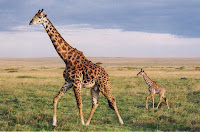
To create this image, I began with a picture of my house and sidewalk. Then, I took a full body picture of myself and selected the necessary areas. Next, I used refine edge to smooth and fix some of the selected areas, and I moved the picture of me on the the house image. Then, I worked on my shadow. I chose a giraffe to be my shadow (inner me), because I am short so the opposite would be that I am tall inside. I took the picture of the giraffe and selected the giraffe out of it, selected the inverse and changed it to Black & White in refine edge. I then used refine edge to try to smooth it out more and went back and changed some of the selected area until it was smoother. Next, I took the giraffe and put it onto my house and sidewalk picture. Then, I changed the opacity of it and used the move tool, transform tool, and warped it to position it how I wanted it. Then, I add text that said "Tall Inside" using the text tool. I think this was a cool project. The hardest part was getting the giraffe shadow to look and be positioned right. The easiest part was inserting the text.











